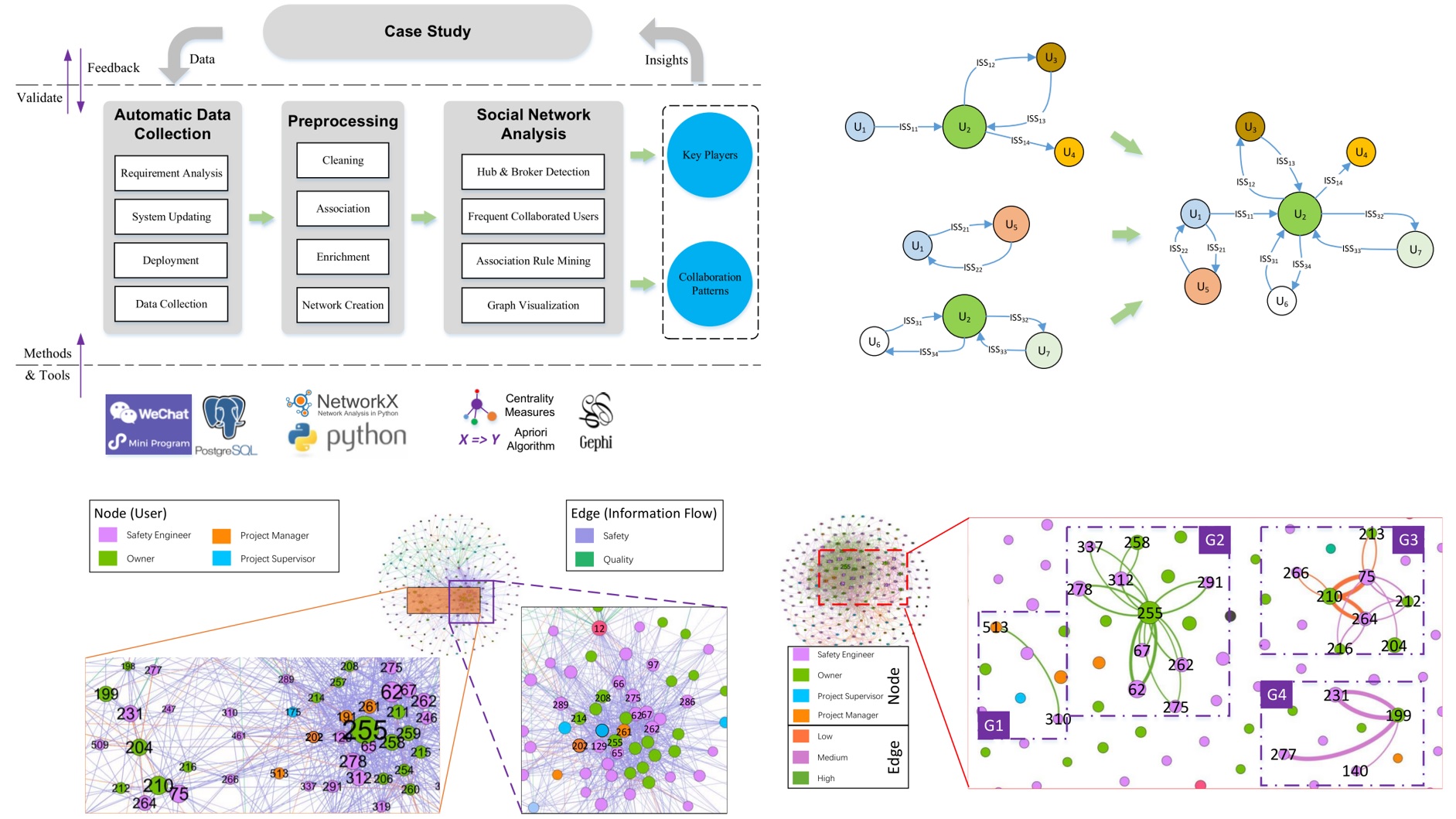An Approach to Twinning and Mining Collaborative Network of Construction Projects
Automation in Construction, 2021
Recommended citation: Lin, J.R.*, Wu D.P. (2021). An Approach to Twinning and Mining Collaborative Network of Construction Projects. Automation in Construction, 125, 103643. doi: 10.1016/j.autcon.2021.103643 http://doi.org/10.1016/j.autcon.2021.103643
Abstract
Understanding complex collaboration processes is essential for the success of construction projects. However, there is still a lack of efficient methods for timely collection and analysis of collaborative networks. Therefore, an integrated framework consisting three parts, namely, system updating for data collection, data preprocessing, and social network analysis, is proposed for the twinning and mining collaborative network of a construction project. First, a system updating strategy for automatic data collection is introduced. Centrality measures are then utilized to identify key players, including hubs and brokers. Meanwhile, information sharing frequency (ISF) and association rule mining are introduced to discover collaborative patterns, that is, frequently collaborating users (FCUs) and associations between information flows and task levels. Finally, the proposed framework is validated and demonstrated in a large-scale project. The results show that key players, FCUs, and associations between information flows and task levels were successfully discovered, providing a deep understanding of collaboration and communication for decision-making processes. This research contributes to the body of knowledge by: 1) introducing ISF and Apriori-based association mining algorithm to identify FCUs and information flow patterns in collaboration; 2) establishing a new data-driven framework to map and analyze fine-grained collaborative networks automatically. It is also shown that people tend to formal small groups to handle certain levels or types of tasks more efficiently. Other researchers and industrial practitioners may use this work as a foundation to further improve the efficiency of collaboration and communication.

This research is supported by the NNational Key R&D Program of China (No. 2018YFD1100900), the National Natural Science Foundation of China (No. 51908323, No. 72091512), and the Tsinghua University Initiative Scientific Research Program (No. 2019Z02UOT).
Accession Number: WOS:000649683100003
ISSN: 0926-5805
eISSN: 1872-7891
IDS Number: SB0HF

Leave a Comment